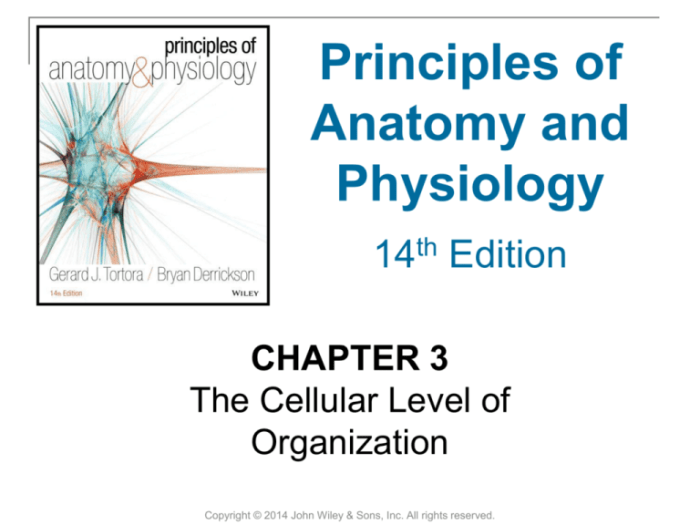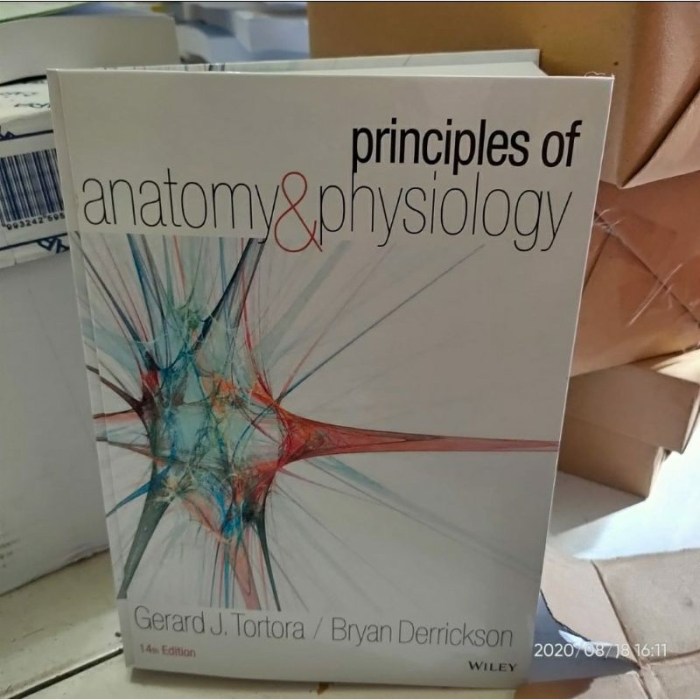Principles of anatomy and physiology 14th edition – Principles of Anatomy and Physiology, 14th Edition, presents a comprehensive and engaging exploration of the human body. Written with a focus on clarity and accessibility, this text provides a solid foundation in the fundamentals of human anatomy and physiology, making it an invaluable resource for students pursuing a wide range of health-related fields.
Through detailed explanations, vivid illustrations, and interactive exercises, Principles of Anatomy and Physiology, 14th Edition, empowers readers to gain a deep understanding of the structure and function of the human body. This edition has been thoroughly revised and updated to reflect the latest scientific advancements, ensuring that readers have access to the most current and accurate information.
1. Introduction to Anatomy and Physiology: Principles Of Anatomy And Physiology 14th Edition
Anatomy and physiology are two closely related fields of science that study the structure and function of living organisms. Anatomy is the study of the physical form of an organism, while physiology is the study of how the organism’s body functions.
The relationship between anatomy and physiology is a dynamic one. The structure of an organism’s body determines how it functions, and the function of an organism’s body affects its structure. For example, the shape of a bird’s wings is determined by the muscles and bones that make up the wings, and the shape of the wings determines how the bird is able to fly.
Levels of Structural Organization in the Human Body
- Chemical level: The human body is composed of atoms, which are the basic building blocks of matter. Atoms combine to form molecules, which are the basic units of structure and function in the body.
- Cellular level: Cells are the basic unit of life. They are the smallest units that can carry out all the functions of life.
- Tissue level: Tissues are groups of cells that perform a specific function. There are four main types of tissues in the human body: epithelial tissue, connective tissue, muscle tissue, and nervous tissue.
- Organ level: Organs are groups of tissues that perform a specific function. There are many different organs in the human body, including the heart, lungs, stomach, and brain.
- Organ system level: Organ systems are groups of organs that work together to perform a specific function. There are 11 organ systems in the human body, including the skeletal system, muscular system, nervous system, and endocrine system.
- Organismal level: The organismal level is the highest level of structural organization in the human body. It is the entire human body, which is made up of all of the organ systems.
2. The Chemical Basis of Life

The human body is composed of matter, which is anything that has mass and takes up space. Matter is made up of atoms, which are the basic building blocks of matter. Atoms are composed of a nucleus, which contains protons and neutrons, and electrons, which orbit the nucleus.
There are four main types of biomolecules: carbohydrates, proteins, lipids, and nucleic acids. Carbohydrates are the body’s main source of energy. Proteins are used to build and repair tissues. Lipids are used to store energy and insulate the body. Nucleic acids store genetic information.
Homeostasis, Principles of anatomy and physiology 14th edition
Homeostasis is the body’s ability to maintain a stable internal environment despite changes in the external environment. Homeostasis is essential for life, and the body has a number of mechanisms to maintain homeostasis, including the nervous system, endocrine system, and immune system.
3. Cells
The Basic Unit of Life

Cells are the basic unit of life. They are the smallest units that can carry out all the functions of life.
There are many different types of cells in the human body, but they all share some common features. All cells have a cell membrane, cytoplasm, and DNA.
The cell membrane is a thin layer of lipids that surrounds the cell. It protects the cell from its surroundings and regulates the passage of materials into and out of the cell.
The cytoplasm is the gel-like substance that fills the cell. It contains all of the cell’s organelles, which are small structures that perform specific functions.
DNA is the genetic material of the cell. It contains the instructions for making all of the cell’s proteins.
Cell Division
Cells divide to produce new cells. There are two main types of cell division: mitosis and meiosis.
Mitosis is the process by which a cell divides into two identical daughter cells. Mitosis is used for growth and repair.
Meiosis is the process by which a cell divides into four daughter cells, each with half the number of chromosomes as the parent cell. Meiosis is used for reproduction.
Quick FAQs
What are the key features of Principles of Anatomy and Physiology, 14th Edition?
Principles of Anatomy and Physiology, 14th Edition, offers a range of features to enhance the learning experience, including:
- Clear and concise writing style
- Vivid illustrations and diagrams
- Interactive exercises and case studies
- Up-to-date scientific information
- Comprehensive glossary and index
Who is the intended audience for Principles of Anatomy and Physiology, 14th Edition?
Principles of Anatomy and Physiology, 14th Edition, is designed for students pursuing a wide range of health-related fields, including:
- Pre-med
- Nursing
- Physical therapy
- Occupational therapy
- Exercise science
What are the benefits of using Principles of Anatomy and Physiology, 14th Edition?
Using Principles of Anatomy and Physiology, 14th Edition, provides several benefits, such as:
- Strong foundation in human anatomy and physiology
- Improved understanding of the human body
- Enhanced critical thinking skills
- Preparation for a successful career in the health sciences